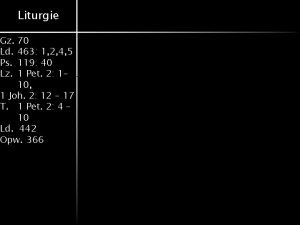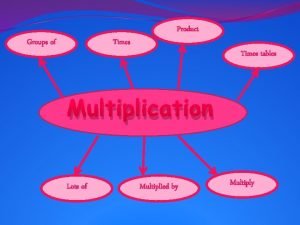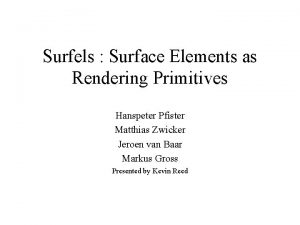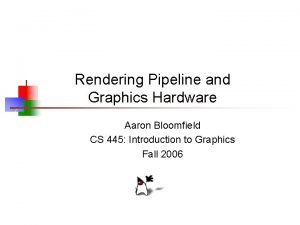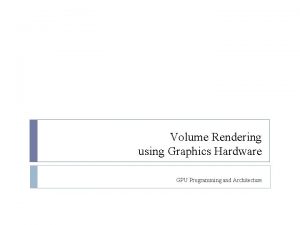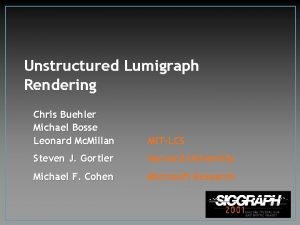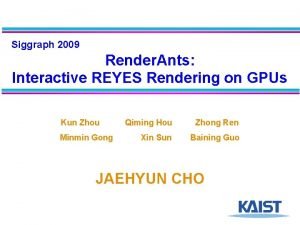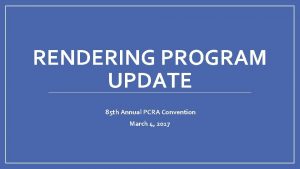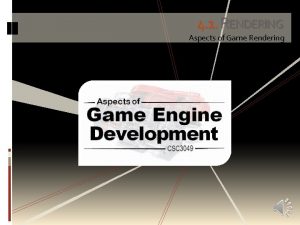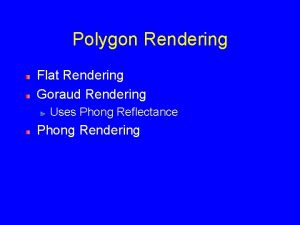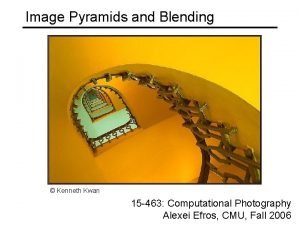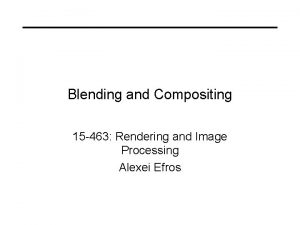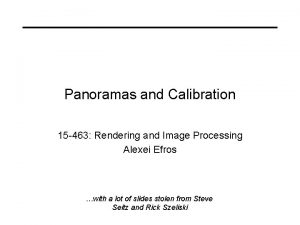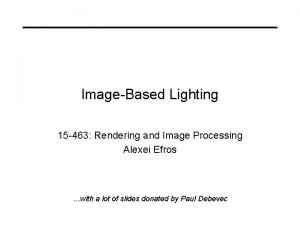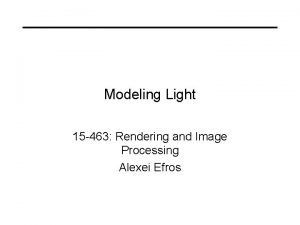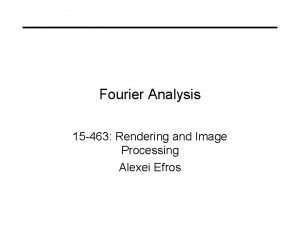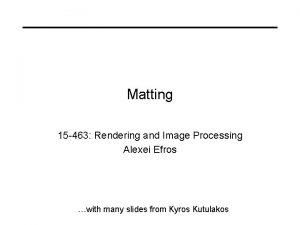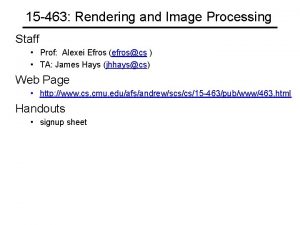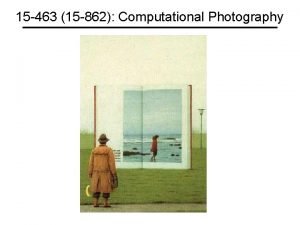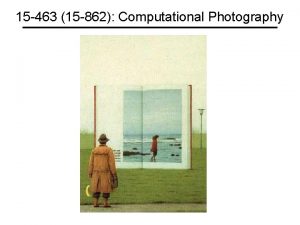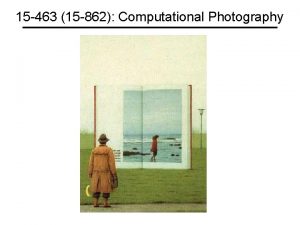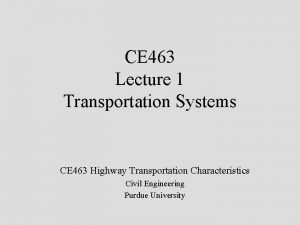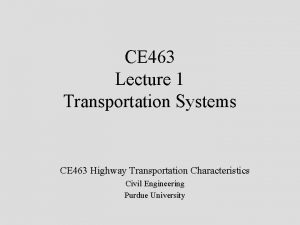Sampling and Pyramids 15 463 Rendering and Image

















![Image Pyramids Known as a Gaussian Pyramid [Burt and Adelson, 1983] • In computer Image Pyramids Known as a Gaussian Pyramid [Burt and Adelson, 1983] • In computer](https://slidetodoc.com/presentation_image_h2/685d149f003c49f9c73d898507f34e70/image-18.jpg)




- Slides: 22

Sampling and Pyramids 15 -463: Rendering and Image Processing Alexei Efros …with lots of slides from Steve Seitz

Today Sampling Nyquist Rate Antialiasing Gaussian and Laplacian Pyramids

Fourier transform pairs

Sampling sampling pattern w 1/w sampled signal Spatial domain Frequency domain

Reconstruction w 1/w sinc function reconstructed signal Spatial domain Frequency domain

What happens when the sampling rate is too low?

Nyquist Rate What’s the minimum Sampling Rate 1/w to get rid of overlaps? w 1/w sinc function Spatial domain Frequency domain Sampling Rate ≥ 2 * max frequency in the image • this is known as the Nyquist Rate

Antialiasing What can be done? Sampling rate ≥ 2 * max frequency in the image 1. Raise sampling rate by oversampling • • • Sample at k times the resolution continuous signal: easy discrete signal: need to interpolate 2. Lower the max frequency by prefiltering • • Smooth the signal enough Works on discrete signals 3. Improve sampling quality with better sampling • • Nyquist is best case! Stratified sampling (jittering) Importance sampling (salaries in Seattle) Relies on domain knowledge

Sampling Good sampling: • Sample often or, • Sample wisely Bad sampling: • see aliasing in action!

Gaussian pre-filtering G 1/8 G 1/4 Gaussian 1/2 Solution: filter the image, then subsample • Filter size should double for each ½ size reduction. Why?

Subsampling with Gaussian pre-filtering Gaussian 1/2 G 1/4 G 1/8 Solution: filter the image, then subsample • Filter size should double for each ½ size reduction. Why? • How can we speed this up?

Compare with. . . 1/2 1/4 (2 x zoom) Why does this look so crufty? 1/8 (4 x zoom)

Image resampling (interpolation) So far, we considered only power-of-two subsampling • What about arbitrary scale reduction? • How can we increase the size of the image? d = 1 in this example 1 2 3 4 5 Recall how a digital image is formed • It is a discrete point-sampling of a continuous function • If we could somehow reconstruct the original function, any new image could be generated, at any resolution and scale

Image resampling So far, we considered only power-of-two subsampling • What about arbitrary scale reduction? • How can we increase the size of the image? d = 1 in this example 1 2 3 4 5 Recall how a digital image is formed • It is a discrete point-sampling of a continuous function • If we could somehow reconstruct the original function, any new image could be generated, at any resolution and scale

Image resampling So what to do if we don’t know • Answer: guess an approximation • Can be done in a principled way: filtering 1 d = 1 in this example 1 2 2. 5 3 4 Image reconstruction • Convert to a continuous function • Reconstruct by cross-correlation: 5

Resampling filters What does the 2 D version of this hat function look like? performs linear interpolation (tent function) performs bilinear interpolation Better filters give better resampled images • Bicubic is common choice Why not use a Gaussian? What if we don’t want whole f, but just one sample?

Bilinear interpolation Smapling at f(x, y):
![Image Pyramids Known as a Gaussian Pyramid Burt and Adelson 1983 In computer Image Pyramids Known as a Gaussian Pyramid [Burt and Adelson, 1983] • In computer](https://slidetodoc.com/presentation_image_h2/685d149f003c49f9c73d898507f34e70/image-18.jpg)
Image Pyramids Known as a Gaussian Pyramid [Burt and Adelson, 1983] • In computer graphics, a mip map [Williams, 1983] • A precursor to wavelet transform

A bar in the big images is a hair on the zebra’s nose; in smaller images, a stripe; in the smallest, the animal’s nose Figure from David Forsyth

Gaussian pyramid construction filter mask Repeat • Filter • Subsample Until minimum resolution reached • can specify desired number of levels (e. g. , 3 -level pyramid) The whole pyramid is only 4/3 the size of the original image!

Laplacian Pyramid Gaussian Pyramid Laplacian Pyramid (subband images) Created from Gaussian pyramid by subtraction

What are they good for? Improve Search • Search over translations – Like homework – Classic coarse-to-fine stategy • Search over scale – Template matching – E. g. find a face at different scales Precomputation • Need to access image at different blur levels • Useful for texture mapping at different resolutions (called mip -mapping) Image Processing • Editing frequency bands separetly • E. g. image blending… next time!
 Image-based modeling
Image-based modeling Vray back to beauty
Vray back to beauty Cgk middelburg
Cgk middelburg Lied 463
Lied 463 46 times tables
46 times tables Math 463
Math 463 Gcbger.nv
Gcbger.nv Sampling method in research
Sampling method in research Advantages and disadvantages of sample survey
Advantages and disadvantages of sample survey Stratified versus cluster sampling
Stratified versus cluster sampling Contoh time sampling
Contoh time sampling Cluster sampling vs stratified sampling
Cluster sampling vs stratified sampling Research sampling
Research sampling Natural sampling vs flat top sampling
Natural sampling vs flat top sampling Arsir gradasi
Arsir gradasi Surfels: surface elements as rendering primitives
Surfels: surface elements as rendering primitives Camera translate
Camera translate Bunkasha games
Bunkasha games Rendering pipeline in computer graphics
Rendering pipeline in computer graphics Volume rendering tutorial
Volume rendering tutorial Chris buehler
Chris buehler Reyes rendering
Reyes rendering Photorealistic rendering carlsbad
Photorealistic rendering carlsbad



